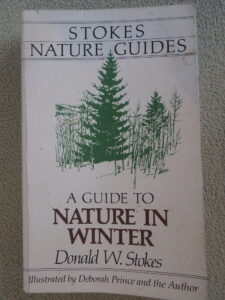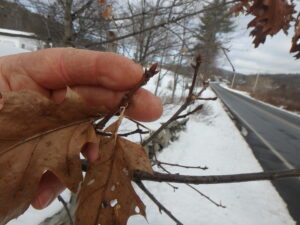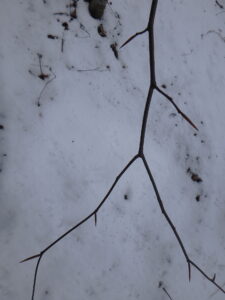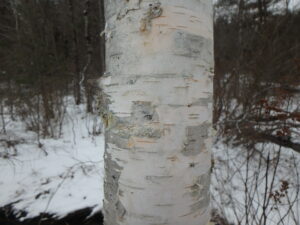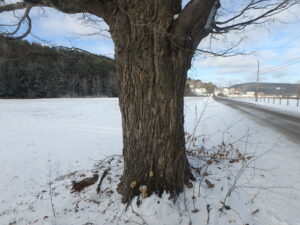A Guide to Nature in Winter
This is a good time to be outdoors exploring the fields and woods. There is so much to see that will be buried in snow later on. But you may ask, what is there to see? Trees, winter weeds, animal footprints, signs of insects, shelf fungi on trees, evergreen woodland plants and more. If I had to choose one person to show me the outdoors in winter, it would be Donald W. Stokes who wrote A Guide to Nature in Winter, that covers all these topics and more.
Donald Stokes’ book explains that if you learn to identify the six most common deciduous trees and the six most common trees with needles or cones, you will know 80% of the trees in most northern forests. And you can do this in winter. Bud location, size and shape are good indicators for identifying trees.
- Maples. Like ash trees, the buds, branches (and later leaves) are arranged opposite each other, while most other trees alternate the location of them on stems. Maples have oval buds that are between ¼ and ½ inch long.
- Ash. Buds on ash trees are larger than maple buds, and are dark and dome shaped. The twigs on ash trees are generally thicker than on maples.
- Oak.These have clusters of buds at the end of each branch, and the younger trees often hold onto their brown leaves through the winter. Buds and branches appear in an alternating pattern.
-
Beech. The buds on beech are long and pointy. But the most distinguishing characteristic is its smooth, gray bark. There is a beech fungal disease which can mar the bark, making it look like a bad case of acne.
- White Birch. Most people can recognize white birch by its bright, white and peeling bark, but other birch species can have golden or greyish bark. The bark also has long horizontal lines marking it, and they often have catkins hanging from the tips of upper branches.
- Poplar, also called aspen. These trees tend to grow in clumps in places with poor soil. The upper bark has a greenish tinge, and their buds are variable in color, but always have sharp, pointy ends.
- Pines.They have clumps of needles in groups of 2, 3 or 5. White pine, the most common, has groups of 5 long, soft needles.
- Hemlock. These trees have short (1/2-inch), soft needles with 2 white lines on the underneath side. There is a short stem between needle and twig.
- Balsam fir. One-inch needles, also with 2 white lines underneath but no stem between needle and twig.
- Cedar. Small, scale-like needles arranged along the twigs.
- Spruce. Four-sided needles that are uncomfortably sharp to the touch.
- Larch. No needles in winter, but cones may be present. Stubby twigs on branches.
If you pay attention to your trees, you will learn to identify them by shape and bark. Sugar maples, for instance, have nice rounded tops and older ones have craggy bark. I can identify a white pine from a fast- moving vehicle: branches on the lower part of the tree droop downward, upper branches reach for the sky.



